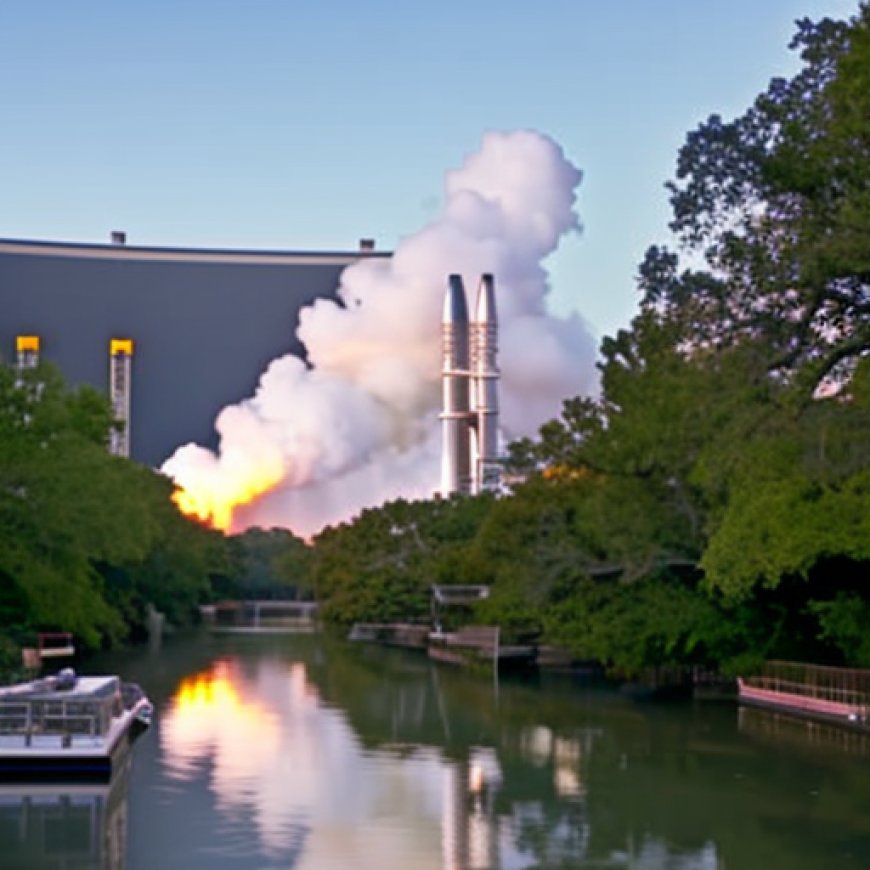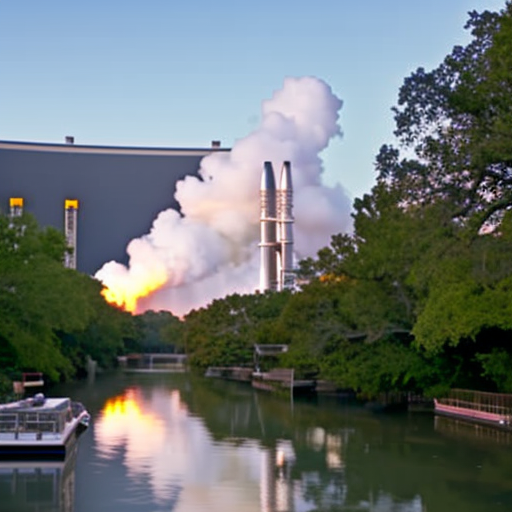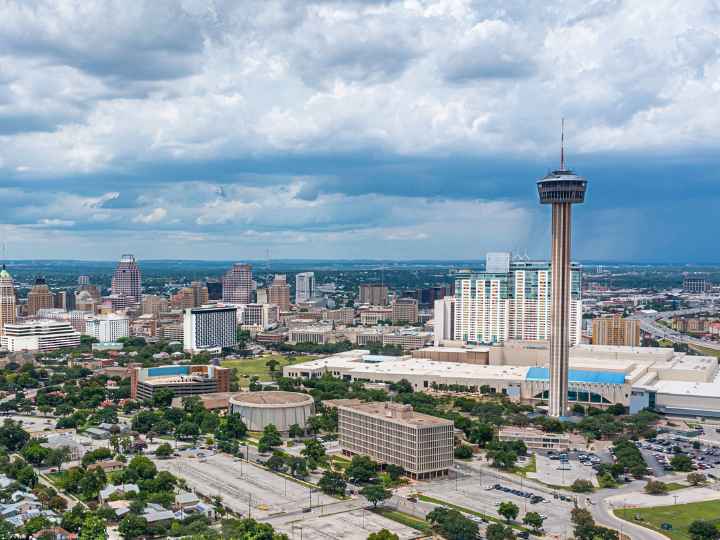University of Houston Researchers Confirm Ozone & Particulates Are Issues in San Antonio Air
University of Houston Researchers Confirm Ozone & Particulates Are Issues in San Antonio Air University of Houston


Trailblazing Research Confirms Air Pollution Levels in San Antonio Exceed Federal Limits
A recent study conducted by the University of Houston has confirmed that air pollution levels in the San Antonio area exceed federal limits, leading to the city’s non-attainment designation by the U.S. Environmental Protection Agency (EPA). This research highlights the importance of addressing air pollution in order to achieve the Sustainable Development Goals (SDGs).
High levels of ozone and particulates in San Antonio air can put the city into the EPA’s nonattainment status. In a series of air tests in the state’s largest urban areas, University of Houston researchers found air troubles in Dallas and Houston, too, with different challenges affecting each city. Photo: Michael Warren / Getty Images

Challenges in Meeting Federal Air Quality Standards
The study reveals that San Antonio is not alone in facing air pollution challenges. Houston and Dallas, Texas’ two other largest urban areas, also struggle to meet federal air quality standards. Each city has its own unique sources and causes of air pollution, emphasizing the need for targeted interventions to address these issues and achieve the SDGs.
Research Findings and Methodology
The research, funded by the Texas Commission on Environmental Quality, utilized a mobile air-quality laboratory (MAQL) developed by the University of Houston. This innovative tool allowed researchers to collect and process large amounts of data in real-time, enabling them to make daily comparisons and identify trends while still in the field.
The study also employed a statistical algorithm called positive matrix factorization (PMF) to analyze aerosol pollution rates and causes. By integrating PMF results with location-specific modeling, the researchers were able to pinpoint the sources and factors contributing to air pollution in San Antonio.
Ozone and Particulate Matter as Key Pollutants
Ozone, one of the six air pollutants designated by the EPA, has been a major challenge for San Antonio’s air quality. The city faces two main problems in dealing with ozone: regional transport and an abundance of ozone precursors. Nitrogen oxides (NOx) and volatile organic compounds (VOCs) are the primary ozone precursors, originating from sources such as power plants, vehicle emissions, oil and gas industry pollutants, and biogenic sources like trees.
In addition to ozone, the study also focused on atmospheric particulate matter. Fine particles, which can easily penetrate the lungs and even enter the bloodstream, pose significant health risks. The research team highlighted the importance of addressing both ozone and particulate matter pollution to protect public health and achieve the SDGs.
Implications for San Antonio’s Air Quality
The study’s findings underscore the need for targeted interventions to improve air quality in San Antonio. The city’s long ozone season, coupled with regional transport and an abundance of ozone precursors, necessitates comprehensive strategies to reduce emissions from various sources. Additionally, addressing the sources of atmospheric particulate matter is crucial for protecting public health and achieving the SDGs.
Collaborative Research Efforts
The research team involved scientists from the University of Houston, Rice University, and Aerodyne Research, Inc. Collaborative efforts and interdisciplinary approaches are essential for understanding and addressing complex environmental challenges.
Funding and Acknowledgements
This research was funded by the Texas Commission on Environmental Quality. The authors acknowledge the support provided by the State of Texas and the Texas Commission on Environmental Quality in conducting this study. The findings and conclusions presented in this article are solely those of the authors and do not necessarily reflect the views of the funding agency.
SDGs, Targets, and Indicators
1. Which SDGs are addressed or connected to the issues highlighted in the article?
- SDG 3: Good Health and Well-being
- SDG 11: Sustainable Cities and Communities
- SDG 13: Climate Action
- SDG 15: Life on Land
The article discusses air pollution levels in the San Antonio area, which directly relates to the health and well-being of the population (SDG 3). It also mentions that Houston and Dallas are also challenged with meeting federal air quality standards, highlighting the issue of air pollution in urban areas (SDG 11). Additionally, the article mentions the impact of air pollution on climate and the environment, as well as the role of wildfires in compromising air quality (SDG 13 and SDG 15).
2. What specific targets under those SDGs can be identified based on the article’s content?
- SDG 3.9: By 2030, substantially reduce the number of deaths and illnesses from hazardous chemicals and air, water, and soil pollution and contamination.
- SDG 11.6: By 2030, reduce the adverse per capita environmental impact of cities, including by paying special attention to air quality and municipal and other waste management.
- SDG 13.1: Strengthen resilience and adaptive capacity to climate-related hazards and natural disasters in all countries.
- SDG 15.1: By 2020, ensure the conservation, restoration, and sustainable use of terrestrial and inland freshwater ecosystems and their services.
The article highlights the need to address air pollution and its impact on health, which aligns with SDG 3.9. It also emphasizes the importance of improving air quality in urban areas, which relates to SDG 11.6. The mention of wildfires and their impact on air quality connects to SDG 13.1, which focuses on building resilience to climate-related hazards. Lastly, the article mentions the need to protect and conserve terrestrial ecosystems, including addressing air pollution’s impact on life on land, which aligns with SDG 15.1.
3. Are there any indicators mentioned or implied in the article that can be used to measure progress towards the identified targets?
- Number of deaths and illnesses related to air pollution
- Air quality index and levels of pollutants (ozone, particulate matter, nitrogen oxides, volatile organic compounds)
- Extent of non-attainment status for federal air quality standards
- Frequency and severity of wildfires
The article mentions the impact of air pollution on health, indicating that tracking the number of deaths and illnesses related to air pollution can be used as an indicator for progress towards SDG 3.9. The levels of pollutants mentioned in the article, such as ozone, particulate matter, nitrogen oxides, and volatile organic compounds, can be measured to assess air quality and progress towards SDG 11.6. The non-attainment status for federal air quality standards can also serve as an indicator for progress in meeting those standards. Additionally, tracking the frequency and severity of wildfires can be used as an indicator for progress towards SDG 13.1 and SDG 15.1.
4. Table: SDGs, Targets, and Indicators
| SDGs | Targets | Indicators |
|---|---|---|
| SDG 3: Good Health and Well-being | 3.9: By 2030, substantially reduce the number of deaths and illnesses from hazardous chemicals and air, water, and soil pollution and contamination. | – Number of deaths and illnesses related to air pollution |
| SDG 11: Sustainable Cities and Communities | 11.6: By 2030, reduce the adverse per capita environmental impact of cities, including by paying special attention to air quality and municipal and other waste management. | – Air quality index and levels of pollutants (ozone, particulate matter, nitrogen oxides, volatile organic compounds) – Extent of non-attainment status for federal air quality standards |
| SDG 13: Climate Action | 13.1: Strengthen resilience and adaptive capacity to climate-related hazards and natural disasters in all countries. | – Frequency and severity of wildfires |
| SDG 15: Life on Land | 15.1: By 2020, ensure the conservation, restoration, and sustainable use of terrestrial and inland freshwater ecosystems and their services. | – Frequency and severity of wildfires |
Behold! This splendid article springs forth from the wellspring of knowledge, shaped by a wondrous proprietary AI technology that delved into a vast ocean of data, illuminating the path towards the Sustainable Development Goals. Remember that all rights are reserved by SDG Investors LLC, empowering us to champion progress together.
Source: uh.edu

Join us, as fellow seekers of change, on a transformative journey at https://sdgtalks.ai/welcome, where you can become a member and actively contribute to shaping a brighter future.







